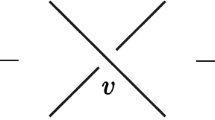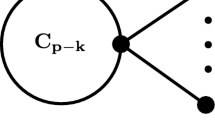Abstract
Given a simplicial complex and a vector-valued function on its vertices, we present an algorithmic construction of an acyclic partial matching on the cells of the complex compatible with the given function. This implies the construction can be used to build a reduced filtered complex with the same multidimensional persistent homology as of the original one filtered by the sublevel sets of the function. The correctness of the algorithm is proved, and its complexity is analyzed. A combinatorial interpretation of our algorithm based on the concept of a multidimensional discrete Morse function is introduced for the first time in this paper. Numerical experiments show a substantial rate of reduction in the number of cells achieved by the algorithm.





Similar content being viewed by others
References
Allili, M., Kaczynski, T., Landi, C.: Reducing complexes in multidimensional persistent homology theory. J. Symb. Comput. 78, 61–75 (2017)
Allili, M., Kaczynski, T., Landi, C., Masoni, F.: Algorithmic construction of acyclic partial matchings for multidimensional persistence. In: Kropatsch, W.G., Artner, N.M., Janusch, I. (eds.) Discrete Geometry for Computer Imagery. Proceedings of the 20th IAPR International Conference, DGCI2017, pp. 375–387. Springer (2017)
Biasotti, S., Cerri, A., Frosini, P., Giorgi, D., Landi, C.: Multidimensional size functions for shape comparison. J. Math. Imaging Vis. 32(2), 161–179 (2008)
Biasotti, S., Cerri, A., Giorgi, D., Spagnuolo, M.: Phog: photometric and geometric functions for textured shape retrieval. Comput. Graphics Forum 32(5), 13–22 (2013)
Carlsson, G.: Topology and data. Bull. Am. Math. Soc. 46(2), 255–308 (2009)
Carlsson, G., Zomorodian, A.: The theory of multidimensional persistence. In: Proceedings of the 23rd annual Symposium on Computational Geometry, SCG ’07, pp. 184–193. ACM, New York, NY, USA (2007).https://doi.org/10.1145/1247069.1247105
Cavazza, N., Ethier, M., Frosini, P., Kaczynski, T., Landi, C.: Comparison of persistent homologies for vector functions: from continuous to discrete and back. Comput. Math. Appl. 66, 560–573 (2013). https://doi.org/10.1016/j.camwa.2013.06.004
Cerri, A., Frosini, P., Krospatch, W.G., Landi, C.: A global method for reducing multidimensional size graphs-graph-based representations in pattern recognition. Lect. Notes Comput. Sci. 6658, 1–11 (2011)
Edelsbrunner, H., Harer, J.: Jacobi sets of multiple Morse functions. In: Foundations of Computational Mathematics: FoCM’02, Minneapolis 2002, pp. 37–57. Cambridge University Press, Cambridge (2004)
Edelsbrunner, H., Harer, J.: Persistent homology: a survey. In: Surveys on Discrete and Computational Geometry. Contemporary Mathematics, vol. 453, pp. 257–282. American Mathematical Society, Providence, RI (2008)
Edelsbrunner, H., Letscher, D., Zomorodian, A.: Topological persistence and simplification. Discrete Comput. Geom. 28(4), 511–533 (2002)
Escolar, E.G., Hiraoka, Y.: Persistence modules on commutative ladders of finite type. In: Mathematical Software ICMS 2014, pp. 144–151. Lecture Notes in Computer Science 8592 (2014)
Forman, R.: Morse theory for cell complexes. Adv. Math. 134, 90–145 (1998)
Frosini, P.: Measuring shapes by size functions. In: Proceedings of the of SPIE, Intelligent Robots and Computer Vision X: Algorithms and Techniques, vol. 1607, pp. 122–133. SPIE, Boston, MA, USA (1991)
Gäfvert, O.: Algorithms for multidimensional persistence. Master’s thesis, KTH, Stockholm, Sweden (2016)
Iuricich, F., Scaramuccia, S., Landi, C., De Floriani, L.: A discrete morse-based approach to multivariate data analysis. In: SIGGRAPH ASIA 2016 Symposium on Visualization, SA ’16, pp. 5:1–5:8. ACM, New York, NY, USA (2016). https://doi.org/10.1145/3002151.3002166
Kaczynski, T., Mrozek, M., Slusarek, M.: Homology computation by reduction of chain complexes. Comput. Math. Appl. 35(4), 59–70 (1998)
King, H., Knudson, K., Mramor, N.: Generating discrete Morse functions from point data. Exp. Math. 14(4), 435–444 (2005)
King, H., Knudson, K., Mramor, N.: Algebraic Topology. Colloquium Publications, vol. 27. American Mathematical Society, Providence (1942)
Mischaikow, K., Nanda, V.: Morse theory for filtrations and efficient computation of persistent homology. Discrete Comput. Geom. 50(2), 330–353 (2013)
Mrozek, M., Batko, B.: Coreduction homology algorithm. Discrete Comput. Geom. 41, 96–118 (2009)
Patel, A.: Reeb spaces and the robustness of preimages. Ph.D. thesis, Duke University (2010)
Robins, V., Wood, P.J., Sheppard, A.P.: Theory and algorithms for constructing discrete Morse complexes from grayscale digital images. IEEE Trans. Pattern Anal. Mach. Intell. 33(8), 1646–1658 (2011)
Sedgewick, R., Wayne, K.: Algorithms. Addison-Wesley, Boston (2011)
Smale, S.: Global analysis and economics. I. Pareto optimum and a generalization of Morse theory. In: Dynamical systems. Proceedings of a Symposium Held at the University of Bahia, Salvador, 1971, pp. 531–544. Academic Press, New York (1973)
The GTS Library (2000). http://gts.sourceforge.net/samples.html. Accessed 26 July 2018
Turner, K., Murkherjee, A., Boyer, D.M.: Persistent homology transform for modeling shapes and surfaces. Inf. Inference 3(4), 310–344 (2014)
Xia, K., Wei, G.W.: Multidimensional persistence in biomolecular data. J. Comput. Chem. 36(20), 1502 (2015)
Author information
Authors and Affiliations
Corresponding author
Additional information
Publisher's Note
Springer Nature remains neutral with regard to jurisdictional claims in published maps and institutional affiliations.
Tomasz Kaczynski was partially supported by NSERC Canada Discovery Grant. Claudia Landi was supported by INdAM-GNSAGA.
Rights and permissions
About this article
Cite this article
Allili, M., Kaczynski, T., Landi, C. et al. Acyclic Partial Matchings for Multidimensional Persistence: Algorithm and Combinatorial Interpretation. J Math Imaging Vis 61, 174–192 (2019). https://doi.org/10.1007/s10851-018-0843-8
Received:
Accepted:
Published:
Issue Date:
DOI: https://doi.org/10.1007/s10851-018-0843-8




